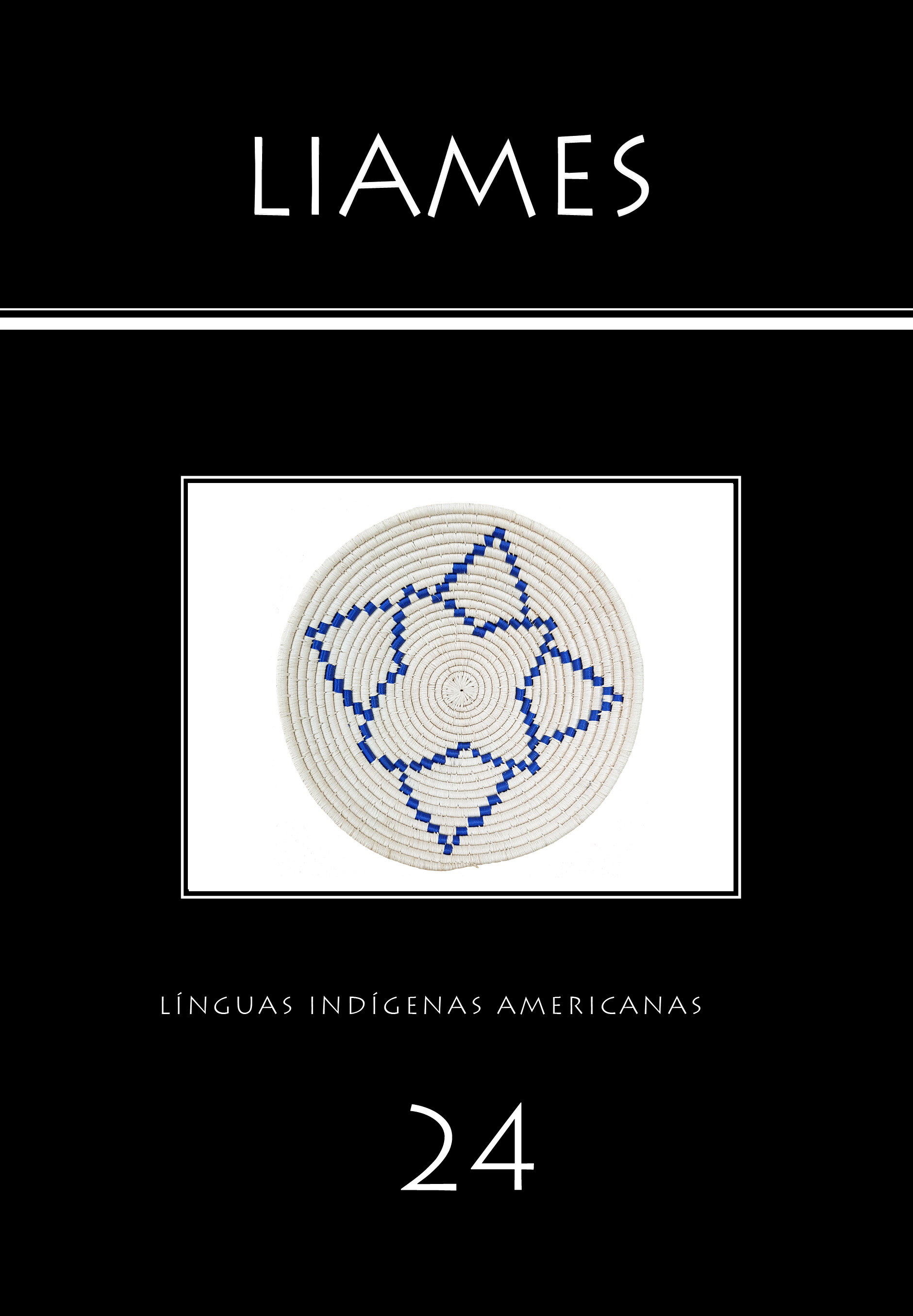Abstract
Paraguayan Guarani is considered to have an SVO basic word order, albeit flexible by virtue of discourse motivations. In a study of narratives, Tonhauser & Colijn (2010) show that subjects are evenly distributed between the pre- and postverbal positions, but fail to identify clear motivations for this pattern. In this paper we address this issue by conducting an analysis of narratives from a predominantly inductive and qualitative viewpoint. We find that postverbal subjects fall into three classes: i) speakers of reporting sentences in direct speech, ii) antitopics in contexts of referential ambiguity, iii) focal referents in presentational sentences. Given that only the latter are valid for the analysis of constituent order, preverbal subjects are shown to outnumber postverbal ones. We also find that preverbal subjects have fewer information-structural restrictions, which along with their higher textual frequency leads us to characterize them as unmarked. Finally, we outline some diachronic and typological implications of our findings.
References
Belloro, Valeria (2011). Dislocaciones y doblados: entre la concordancia anafórica y la gramatical. Hechos y Proyecciones del lenguaje 20: 127-149. Disponible em: https://revistas.udenar.edu.co/index.php/rheprol/article/view/7477
Belloro, Valeria (2012). La estructura informativa. En Ricardo Mairal; Lilián Guerrero; Carlos González Vergara (coords.), El funcionalismo en la teoría lingüística: la Gramática del Papel y la Referencia. Introducción, avances y aplicaciones, pp. 225-244. Ediciones Akal, S.A.
Belloro, Valeria; Guerrero, Lilián (2010). La función discursiva de los argumentos postpuestos en yaqui. En Rosa María Ortiz Ciscomani (coord.), Estudios Lingüísticos, vol. 2, pp.71-95. Universidad de Sonora.
Bybee, Joan L. (2002). Main clauses are innovative, subordinate clauses are conservative: Consequences for the nature of constructions. En Joan L. Bybee; Michael Noonan (eds.), Complex sentences in grammar and discourse. Essays in honor of Sandra A. Thompson, pp. 1-18. John Benjamins. https://doi.org/10.1075/z.110.02byb
Clopper, Cynthia; Tonhauser, Judith (2013). The prosody of focus in Paraguayan Guaraní. International Journal of American Linguistics 79(2): 219-251. https://doi.org/10.1086/669629
Croft, William (1991). Syntactic categories and grammatical relations. The cognitive organization of information. The University of Chicago Press.
Dietrich, Wolf (1986). El idioma chiriguano. Ediciones Cultura Hispánica, Instituto de Cooperación Iberoamericana.
Dik, Simon (1997). The theory of functional grammar. Mouton de Gruyter.
Estigarribia, Bruno (2020). A grammar of Paraguayan Guarani. UCL Press. Disponible en: https://www.uclpress.co.uk/products/138755
Givón, T. (1976). Topic, pronoun, and grammatical agreement. En Charles Li (ed.), Subject and topic, pp. 149-185. Academic Press.
Givón, T. (1983). Topic continuity in discourse: A quantitative cross language study (Typological studies in language 3). John Benjamins.
González, Hebe A. (2005). A grammar of Tapiete (Tupi-Guarani) (PhD. dissertation). University of Pittsburgh. Disponible en: http://d-scholarship.pitt.edu/id/eprint/8444
Gregores, Emma; Suárez, Jorge A. (1967). A description of colloquial Guaraní. Mouton de Gruyter. https://doi.org/10.1515/9783111349633
Greenberg, Joseph [1966] (2005). Language universals: With special reference to feature hierarchies. De Gruyter. https://doi.org/10.1515/9783110899771.fm
Guerrero, Lilián; Belloro, Valeria (2010). On word order and information structure in Yaqui. En José Camacho; Rodrigo Gutiérrez Bravo; Liliana Sánchez (eds.), Information structure in indigenous languages of the Americas, pp.115-137. Mouton de Gruyter.
https://doi.org/10.1515/9783110228533.115
Jensen, Cheryl (1998). Comparative tupi-guarani morphosyntax. En Desmond Derbyshire; Geoffrey Pullum (eds.), Handbook of Amazonian languages, vol.4: 489-619. Mouton de Gruyter.
Lambrecht, Knud (1981). Topic, antitopic and verb agreement in non-standard French. John Benjamins.
Lambrecht, Knud (1994). Information structure and sentence form. topic, focus, and the mental representation of referents. Cambridge University Press.
Lambrecht, Knud (2001). Dislocation. En Martin Haspelmath; Ekkehard König; Wulf Oesterreicher; Wolfgang Raible (eds.), Language typology and language universals: An international handbook, vol. 2: 1050–1078. Walter de Gruyter.
Tonhauser, Judith (2006). The temporal semantics of noun phrases: Evidence from Guaraní. (PhD dissertation). Stanford University.
Tonhauser Judith; Colijn, Erika (2010). Word order in Paraguayan Guarani. International Journal of American Linguistics 76(2): 255-88. https://doi.org/10.1086/652267
Van Valin, Robert Jr. (1999). A typology of the interaction of focus structure and syntax. En E. Raxiina; J. Testelec (eds.), Typology and the theory of language: From description to explanation, pp. 1-14. Languages of Russian Culture. Disponible en:
http://www.acsu.buffalo.edu/~rrgpage/rrg/vanvalin_papers/focuswotypology.pdf
Van Valin, Robert Jr. (2005). Exploring the syntax-semantics interface. Cambridge University Press.
Velázquez-Castillo, Maura (1995). Noun incorporation and object placement in discourse. The
case of Guaraní. En Pamela A. Downing; Michael Noonan (eds.), Word order in discourse, pp. 555-579. John Benjamins.
Velázquez-Castillo, Maura (1996). The grammar of possession: Inalienability, incorporation and possessor ascension in Guaraní. John Benjamins.

This work is licensed under a Creative Commons Attribution-NonCommercial 4.0 International License.
Copyright (c) 2024 Martín Califa, Valeria A. Belloro


